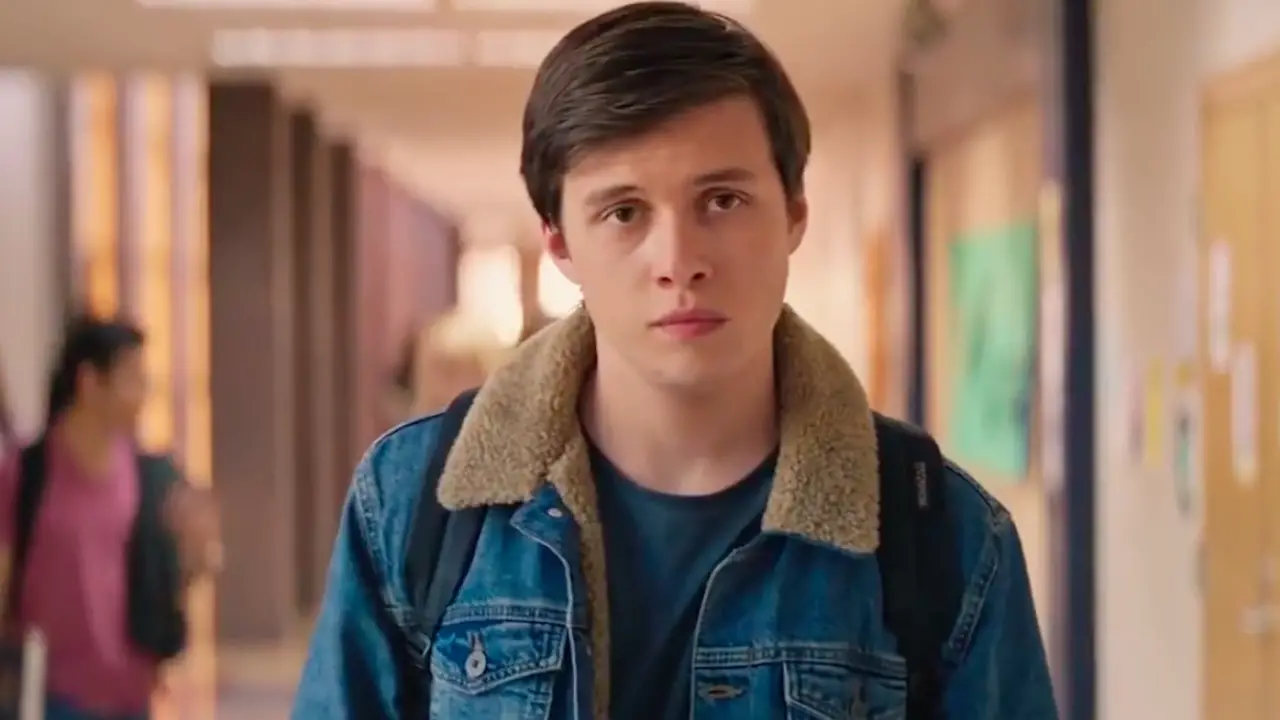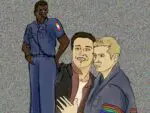I have to say, “Love, Simon” did mean something to me. Sure, maybe it oozed with characteristic, even cliché, teen coming-of-romantic-age flair. Maybe its Hollywood sheen glinted unreservedly in front of your eyes, but still: the movie felt good. Happiness and stability have not traditionally been the domain of queer people onscreen (or, for that matter, queer people offscreen.)
We’ve all seen the countless negative images of queerness in the media: serial killers, pedophiles, diseased bodies and dead bodies. For years, any queer person on the screen was usually troubled, often insane and almost certainly destined to die onscreen. Think Buffalo Bill from Jonathan Demme’s classic 1991 psychological thriller “Silence of the Lambs:” sadistic, transgressive, a gruesome murderer of women and, of course, obviously coded as queer.
Buffalo Bill pranced around his apartment in drag, blurring the lines of gender in a suit of his female victims’s skins. He laughed queenily at his mortified victims. He even owned a dog named Precious, of all things. Of course, Demme insisted that Buffalo Bill was not, in fact, “gay,” just confused; still, the character radiated queerness in the worst way possible.
Or think Brandon Teena, the tragic hero of “Boys Don’t Cry.” Though a heart-wrenching and necessary film, it still follows the old conventions of gay narratives; deviance must always end badly, even for sympathetic characters.
The movie dangles love and happiness in front of Brandon like a fruit-laden branch hanging just out of reach; then a gang of men brutally rapes and murders him. For the queer child beginning to coalesce some sense of their identity, the lives they saw unfurl and cut short must not have inspired any great confidence in their belief in leading successful lives of their own.
With this legacy of violence and tragedy, “Love, Simon,” along with other recent queer-centric films such as “Call Me By Your Name” and “Moonlight,” is a game-changer. The loving attention these recent films pay to the concerns of queer adolescents and their commitment to painting a more optimistic portrait of their lives, are, frankly, revolutionary.
There is more to the LGBTQ+ experience than freakishness or death. For countering those narratives with un-flashy dignity, we have to thank these new films. However, I also have to say that “Love, Simon” left me wondering: In the rise of more palatable representations of queer people, have we not traded one simple narrative for another?
“Love, Simon” is the story of a closeted high school student who, by all accounts, leads a “normal” life. The son of happily-married parents, he lives in a well-kept upper-middle class neighborhood. His core group of friends is loving and supportive. Most importantly, he draws no undue attention to himself at school.
At least, he doesn’t draw attention until he is outed online by the vindictive theater schmuck, Martin. Martin posts Simon’s emails to the anonymous “Blue,” the school’s other closeted gay kid, on the school’s Tumblr gossip page. Things go awry, of course. Then the audience waits with bated breath to see what becomes of the innocent and loveably dopey Simon.
However, it turns out that Simon and Blue aren’t the only gay kids at school. There is the very open, very feminine Ethan. He wears gender-fluid clothing and talks back to anyone who makes fun of him. I wanted to learn more about Ethan, how he came to flaunt his femininity and queerness unabashedly.
Unfortunately, the script limits Ethan’s lines almost exclusively to a series of pithy retorts. There’s one scene where he explains to Simon that his own family hasn’t entirely accepted his queerness; however, this is the only scene in the movie that gives his character any depth.
“Love, Simon,” “Call Me By Your Name” and “Moonlight” are undoubtedly important films. But, as Peter Domingez of “Buzzfeed” notes, these movies still “tell stories through the lens of masculine emotion…any hint of gay femininity and gender dissidence is generally erased, coded, or relegated to minor characters.”
Part of what makes films such as “Love, Simon” so easily digestible is their adherence to recognizable gender norms. The gays are just like you, they say. They wear jeans and sweaters and sneakers and comport themselves as any other masculine man would. The only thing different about them is that they fall in love with other, equally masculine, men.
What would the box office numbers have looked like for “Love, Ethan,” the story of a queer black teenager coming into his femininity? Would it have been marketed as a film for everyone? Or would it have been corralled into a niche audience, being a bit too much for the general public to handle? It wouldn’t be the first time that happened.
After all, Luca Guadagnino, director of “Call Me By Your Name,” actively chose not to show his two main characters engaging in sex, in order to make the film more “universal.” If straight audiences can’t handle two traditionally masculine men having sex, they certainly aren’t ready for queer characters that challenge strict gender constructs.
Still, it’s unfair that feminine gay men, queer women and non-binary folk haven’t had their day in the sun yet, especially considering they did much of the activism and intellectual work to bring queer people out of the shadows.
After all, it was Marsha P. Johnson and Sylvia Rivera, two transgender drag queens of color, who took charge of the Stonewall Riots. The stories of queer people extend far past white male homosexuality; each one deserves to reach as wide an audience as “Love, Simon” does.
None of this is to say that “Love, Simon,” “Moonlight,” or “Call Me By Your Name” don’t deserve critical and commercial attention. All three are gorgeous, moving films. And of course, the stories they tell are crucial additions to the queer cinematic canon. Still, films about different kinds of queer people, ones who don’t conform to traditional notions of “male” or “female,” are equally important and should be marketed as such.
One could make the argument that studios take huge financial risks by investing in challenging films, but to that I say: they have to try. I doubt anyone could have envisioned a major studio releasing a film featuring a gay teen romance even 10 years ago, but it happened.
Nothing changes until someone decides to walk the line. The territory might be precarious, but there’s a little Ethan out there somewhere, waiting for their turn in front of the camera.

















